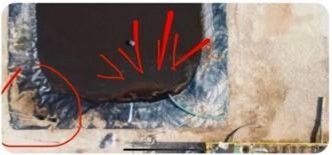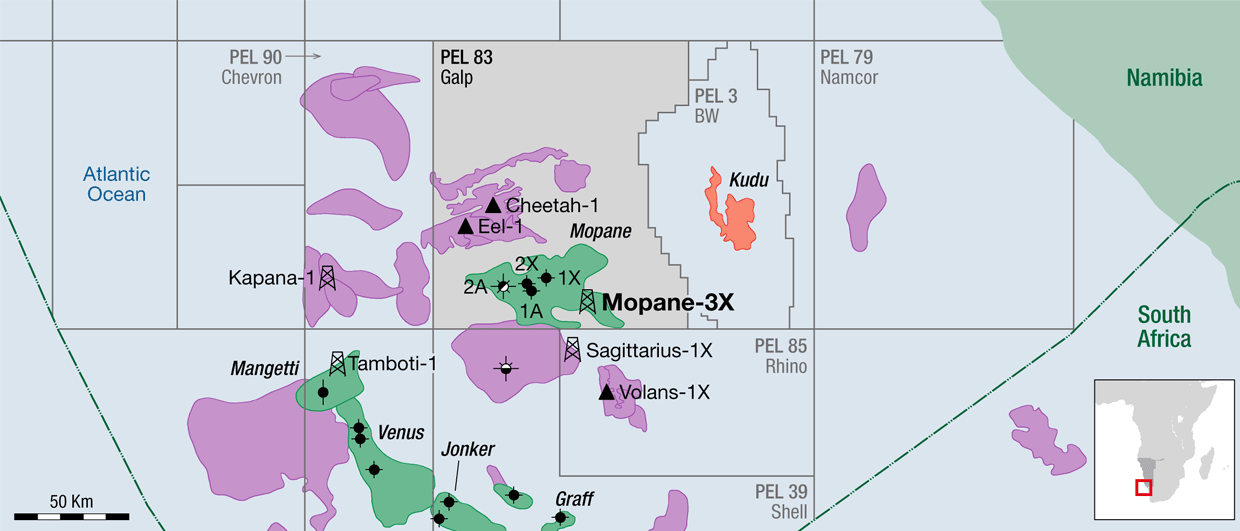Late last week, ReconAfrica announced the results of its 4th well in their PEL76 licence in the Damara Fold Belt, onshore Namibia. According to the company, the Naingopo well reached a total depth of 4,184 m in November last year.
The press release also says that the well encountered over 50 m of net reservoir in the Otavi Group, which is a succession of Neoproterozoic carbonates. Indications of oil are also reported, which is to be investigated further through sidewall core analysis. Additionally, the company writes that indications of oil via rock fluorescence were pervasive within the Otavi Group. The press release also mentions that “this interval of fluorescence was associated with oil being recovered at surface in the drilling mud system.”
The press release is not talking up a discovery and is quite modest in tone. The best that could be concluded here is that there is, or was, a working petroleum system.
1 out of 9
“This is disappointing news,” says geologist Jamie Vinnels in a communication with me. “From a petroleum geology point of view, if they had pay it would be evident on the petrophysical logs. From the MDT tool they reportedly ran, it should have been possible to obtain a pressure gradient to demonstrate the presence of hydrocarbons. If they had pay they would likely say so.”
“Indications of oil could mean anything including bitumen staining from residual hydrocarbons, or shows, as reported in ReconAfrica’s previous 3 wells, and other wells in the region”, continues Jamie. “They had 9 targets in the Naingopo well and only 1 of them had a reservoir. In addition, there is no mention of reservoir quality or net-to-gross.”
“Reservoir does not equal pay or permeability, and does not equal a commercial discovery. Their previous wells indicate marginal reservoir quality at best in the Neoproterozoic section. The main impact I see is that the prospective resource base of the basin goes down further, and there is now increased play and prospect risk. Trap geometry, charge, and seal are likely the key risks,” Jamie concludes.
A sudden rise
But, let’s take a look at the share price over the past 12 months. Just before the announcement of the Naingopo well results, and the associated drop in share price to almost a 12-months low on Friday last week, the price spikes for a couple of days. Why is that?
It may be related to an observation in the press release that speaks about “oil being recovered in the drilling mud system.”

Namely, just a few days before the official press release last week, drone photos were posted on Discord servers and trading discussion websites, apparently flown by private investors, showing an oil film in the mud pit of the Naingopo well, including some commentary saying that “this is hydrocarbon staining in the cuttings,” speculating that it was from somewhere in the Otavi reservoirs and adding that it was “definitely free oil”, and that it looked as if the company had been fishing off the oil. The possibility that the oil is from wellsite equipment was not so frequently discussed.

The timing of this is quite interesting, with the speculations about “free oil” in the mud pit circulating on investment forums just a few days before the official ReconAfrica press release that seems a lot less promising in terms of what they actually found. It may well explain why the share price went up, be it temporarily.
Questions worth asking
So, apart from another dry well drilled, as that is probably the best way to characterize the results of the Naingopo well in one word, it is the timing of the share price hikes just before that leaves a funny feeling. As someone else told me, “I’ve been contacted by a few long term ReconAfrica investors who completely sold their positions today. They have had enough of what is obviously continued manipulation of shareholders and markets.”
It is clear that questions can be asked about the timing of announcements and the effect it has on share prices.





